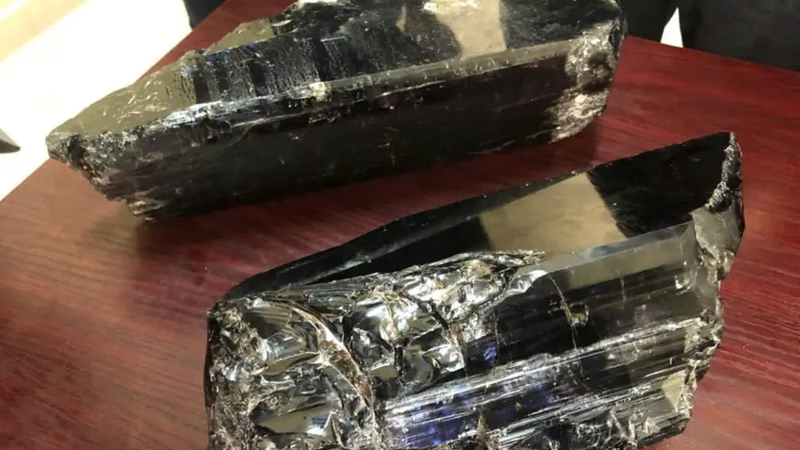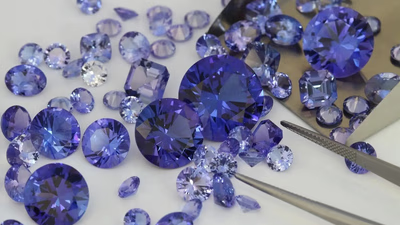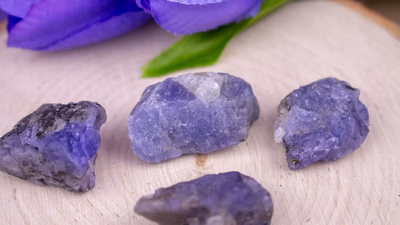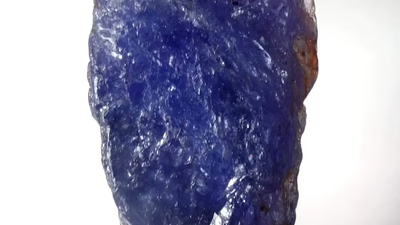
Tanzanite gemstones showcasing their unique colors and origins.
Tanzanite is found exclusively in a very small area of northern Tanzania, near the Mererani (or Merelani) Hills in the Simanjiro District of the Manyara Region. This area is situated close to the city of Arusha and the Kilimanjaro International Airport, making it relatively accessible despite its limited geographic range. The mining area is a narrow strip of land approximately 7 kilometers long and 2 kilometers wide. This unique and highly localized occurrence makes tanzanite one of the rarest gemstones in the world, contributing significantly to its value and allure.
As you might have guessed from its name, tanzanite is only found in northern Tanzania at the foot of Mount Kilimanjaro. This gemstone has a deep purple blue color that distinguishes it from sapphire. Even though its price is not very high compared to the most expensive and luxurious jewels in the world, but be sure that as its resources decrease in the next 20 to 25 years due to the excessive extraction that is taking place now, its price will skyrocket. .
The Great Rift Valley stretches approximately 5,000 km from Syria in Middle East Asia to Mozambique in southern Africa. This rift is slowly but surely splitting Africa in two and is the meeting point of two tectonic plates that have been colliding for millions of years. Volcanic activity here produced Africa's highest peak, Mount Kilimanjaro, and the second largest lake, Tanganyika. Volcanic activity, magma and the subsequent cooled lava have helped form many precious gemstones and emeralds, rubies, sapphires, garnets, tourmalines and topaz are just some of those found on this mountain. Once in the past, igneous rocks containing magma rich in minerals were mixed and combined with the movement of the continental plates, which finally produced tanzanite gemstones.
In 1990, the Tanzanian government divided the tanzanite mines into four blocks: blocks A, B, C and D. Blocks A and C were awarded to large operators, while blocks B and D were reserved for local miners. In 2005, the government extended the Block C mining lease to TanzaniteOne, which had paid $40 million for its mining lease and license. According to the amount of mining, currently gemologists estimate that the stock of this gem will be exhausted soon. As a result, tanzanite is known as the gem of a generation; Because this generation is the last generation that can buy this gem before it runs out of stock.
Tanzanite is extracted through both small-scale artisanal mining and larger-scale commercial operations. The mining process involves drilling, blasting, and tunneling into the host rock to retrieve the gemstones. The mining conditions can be quite challenging due to the depth and hardness of the rock. Moreover, the limited size of the mining area and the depth at which tanzanite is found make extraction difficult and costly. Tanzanite displays strong pleochroism, meaning it can show different colors when viewed from different angles. Typically, it exhibits blue, violet, and burgundy hues. Most tanzanite is heat-treated to enhance its color. The treatment involves heating the stone to around 500-600°C (932-1112°F), which transforms the brownish or greenish zoisite into the vivid blue-violet tanzanite.
-

Tanzanite stones are valued for their vibrant blue and violet hues, with high-quality specimens exhibiting strong pleochroism and minimal inclusions. The clarity, cut, carat weight, and certification from reputable gemological laboratories are crucial factors in determining the stone"s value. Authentic tanzanite is exclusively sourced from Tanzania, making verification of origin essential. Larger stones with deep colors are generally more valuable, but quality should not be compromised for size. The gemstone"s hardness ranges from 6 to 7 on the Mohs scale, indicating it may be prone to scratches and damage, which makes it less suitable for everyday wear. Buyers should inspect tanzanite using a jeweler’s loupe to check for clarity and any visible flaws. Comparing multiple stones can help assess color saturation and quality. Genuine tanzanite displays different colors under varying lighting conditions and may exhibit a soft glow under UV light.
Most tanzanite is heat-treated to enhance color; untreated stones are rare and can have different values. A gemological report is essential for confirming authenticity and detailing any treatments the stone has undergone.
-

Tanzanite is a unique blue to violet gemstone, a variety of zoisite, discovered in Tanzania"s Mererani Hills. Its striking color can change based on crystal orientation and lighting, a phenomenon known as pleochroism. First found in 1967 by a Maasai tribesman, tanzanite gained popularity through Tiffany & Co. , which named it after its origin. The gemstone"s rarity stems from its exclusive source, making it highly desirable. With a hardness of 6. 5 to 7 on the Mohs scale, tanzanite is somewhat vulnerable to scratches and requires careful handling. Most stones available today are heat-treated to enhance their color, which ranges from brownish to greenish before treatment.
The value of tanzanite is determined by its color, clarity, cut, and carat weight; deep blue or violet stones without inclusions are the most sought after. Despite being relatively new to the market compared to other gemstones, tanzanite"s unique beauty and limited availability contribute to its growing popularity. "
-

Tanzanite is a unique gemstone known for its captivating blue and violet hues, which can vary based on viewing angles due to its pleochroic nature. The most sought-after color is deep blue, with larger stones exhibiting more intense shades. Violet tanzanite, while also valued, is less popular than the blue variety. Green tanzanite, or "chrome tanzanite," is rarer and less valued compared to its blue and violet counterparts. Untreated tanzanite can show brown or yellow hues but is often heat-treated to enhance its appeal. The gemstone"s origins trace back to Tanzania, where it was first discovered and named by Tiffany & Co. in the 1970s. The market primarily consists of heat-treated stones due to their vibrant colors, while untreated stones are prized by collectors for their rarity.
Cat’s Eye tanzanite features a unique optical effect resembling a cat"s eye and is highly sought after despite its rarity. Bi-color tanzanite displays two distinct colors within the same stone, making it particularly appealing to collectors. Understanding the various types of tanzanite and their market values can help buyers appreciate this remarkable gemstone"s full spectrum. "
-

The value of tanzanite is determined by factors such as color, clarity, cut, carat weight, and certification. The most sought-after tanzanite displays a deep blue or violet-blue hue, with high color saturation significantly enhancing its value. Clarity is crucial; eye-clean stones are more valuable than those with visible inclusions. The quality of the cut also affects the stone"s brilliance and overall appeal. Larger tanzanite stones tend to be more valuable, especially if they maintain good color and clarity. Certification from reputable gemological laboratories can increase market value due to verified authenticity. Tanzanite is rarer than diamonds but generally costs much less, with prices ranging from $200 to $2,000 per carat based on quality. Market demand and supply limitations from its exclusive mining location in Tanzania further influence pricing dynamics.
Retail prices often include markups compared to wholesale prices, making it essential for buyers to purchase from reputable sources. "
-

Tanzanite is exclusively found in a small region of northern Tanzania, specifically near the Mererani Hills in the Simanjiro District. This area, approximately 7 kilometers long and 2 kilometers wide, is close to Arusha and Kilimanjaro International Airport, making it relatively accessible. The gemstone"s rarity stems from its limited geographic range, contributing to its high value. As resources diminish due to excessive extraction, prices are expected to rise significantly over the next 20 to 25 years. The Great Rift Valley, which stretches from Syria to Mozambique, plays a crucial role in the geological formation of tanzanite through volcanic activity and tectonic movements. The Tanzanian government has divided mining operations into four blocks, with large operators controlling two blocks while local miners work the others. Mining conditions are challenging due to depth and rock hardness, requiring both artisanal and commercial extraction methods. Tanzanite exhibits strong pleochroism, displaying different colors from various angles, typically blue, violet, and burgundy hues.
Most stones undergo heat treatment to enhance their color. "





